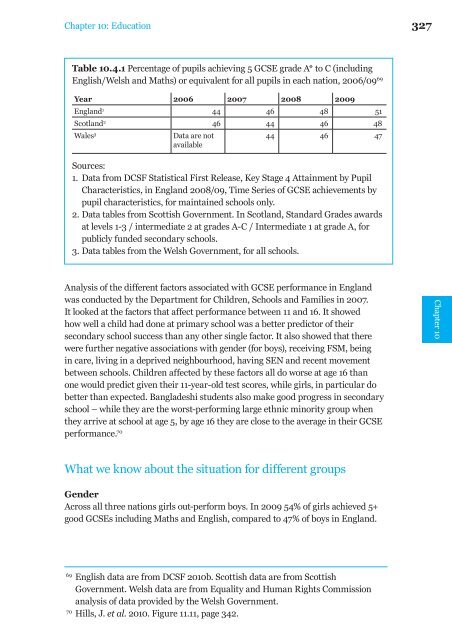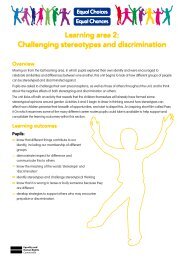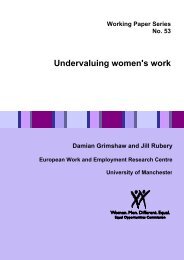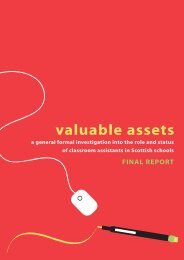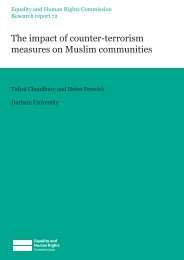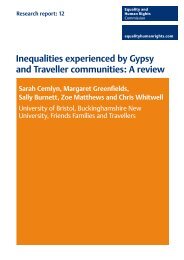Chapter 10: Education - Equality and Human Rights Commission
Chapter 10: Education - Equality and Human Rights Commission
Chapter 10: Education - Equality and Human Rights Commission
You also want an ePaper? Increase the reach of your titles
YUMPU automatically turns print PDFs into web optimized ePapers that Google loves.
<strong>Chapter</strong> <strong>10</strong>: <strong>Education</strong> 327<br />
Table <strong>10</strong>.4.1 Percentage of pupils achieving 5 GCSE grade A* to C (including<br />
English/Welsh <strong>and</strong> Maths) or equivalent for all pupils in each nation, 2006/09 69<br />
Year 2006 2007 2008 2009<br />
Engl<strong>and</strong> 1 44 46 48 51<br />
Scotl<strong>and</strong> 2 46 44 46 48<br />
Wales 3<br />
Data are not<br />
available<br />
44 46 47<br />
Sources:<br />
1. Data from DCSF Statistical First Release, Key Stage 4 Attainment by Pupil<br />
Characteristics, in Engl<strong>and</strong> 2008/09, Time Series of GCSE achievements by<br />
pupil characteristics, for maintained schools only.<br />
2. Data tables from Scottish Government. In Scotl<strong>and</strong>, St<strong>and</strong>ard Grades awards<br />
at levels 1-3 / intermediate 2 at grades A-C / Intermediate 1 at grade A, for<br />
publicly funded secondary schools.<br />
3. Data tables from the Welsh Government, for all schools.<br />
Analysis of the different factors associated with GCSE performance in Engl<strong>and</strong><br />
was conducted by the Department for Children, Schools <strong>and</strong> Families in 2007.<br />
It looked at the factors that affect performance between 11 <strong>and</strong> 16. It showed<br />
how well a child had done at primary school was a better predictor of their<br />
secondary school success than any other single factor. It also showed that there<br />
were further negative associations with gender (for boys), receiving FSM, being<br />
in care, living in a deprived neighbourhood, having SEN <strong>and</strong> recent movement<br />
between schools. Children affected by these factors all do worse at age 16 than<br />
one would predict given their 11-year-old test scores, while girls, in particular do<br />
better than expected. Bangladeshi students also make good progress in secondary<br />
school – while they are the worst-performing large ethnic minority group when<br />
they arrive at school at age 5, by age 16 they are close to the average in their GCSE<br />
performance. 70<br />
<strong>Chapter</strong> <strong>10</strong><br />
What we know about the situation for different groups<br />
Gender<br />
Across all three nations girls out-perform boys. In 2009 54% of girls achieved 5+<br />
good GCSEs including Maths <strong>and</strong> English, compared to 47% of boys in Engl<strong>and</strong>.<br />
69<br />
English data are from DCSF 20<strong>10</strong>b. Scottish data are from Scottish<br />
Government. Welsh data are from <strong>Equality</strong> <strong>and</strong> <strong>Human</strong> <strong>Rights</strong> <strong>Commission</strong><br />
analysis of data provided by the Welsh Government.<br />
70<br />
Hills, J. et al. 20<strong>10</strong>. Figure 11.11, page 342.


